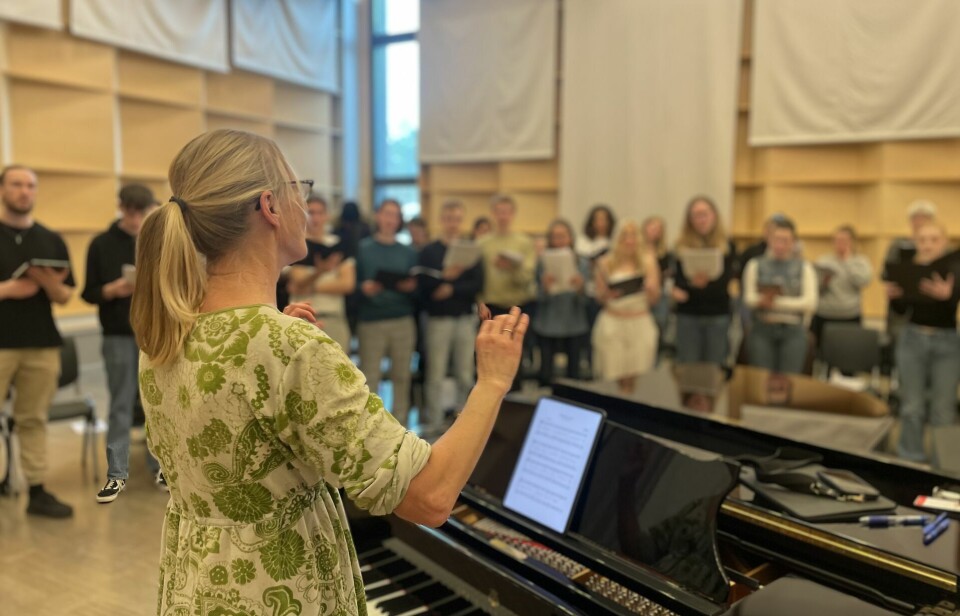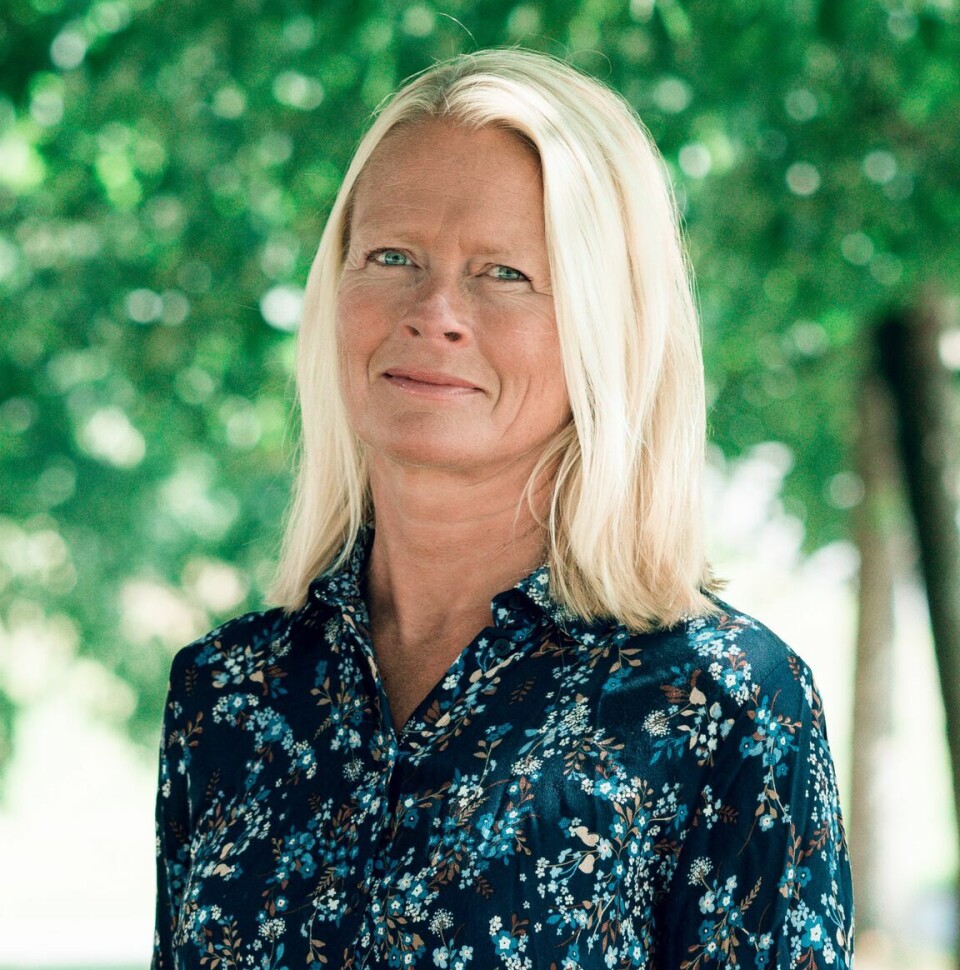THIS CONTENT IS BROUGHT TO YOU BY THE University of Agder - read more
Do you feel voice shame? Researchers believe singing can be good for your health
Singing brings joy and a sense of community. Research shows that we need it, yet singing is losing its place in our daily lives.

Singing releases happy hormones, reduces stress hormones, and strengthens muscles and bones.
You also improve your posture when standing and singing, whether in a choir, at school, or in the shower at home. When you hear someone sing, it makes you feel happy too.
This is supported by research conducted by Anne Haugland Balsnes.
Singing comes naturally
Balsnes is a music professor at the University of Agder. She encourages singing with young children, in schools, and letting song accompany you throughout life.
“The voice is the only instrument that's part of your body. We're all born with a voice that can easily harmonise with others. Young children sing spontaneously; it's an innate part of being human. Singing simply brings happiness. But it needs nurturing, otherwise it fades away,” she says.

Even though singing offers many practical benefits, Balsnes believes the most important thing is that singing, as a human and aesthetic form of expression, holds intrinsic value.
Voice shame and singing confidence
It's unfortunately not uncommon to experience voice shame. You might feel your voice isn't good enough and therefore avoid singing.
We encounter music and singing in various settings, which often leads us to compare ourselves to others.
According to Balsnes, many people struggle to distinguish between having a performer's voice and simply participating in group singing.
“The opposite of voice shame is what I call singing confidence – being comfortable enough with your voice to start a song among friends or join in with group singing,” she says.
Enhancing language skills and concentration
Singing can be used in learning. Students can sing multiplication tables or songs about unity. When you learn songs with varied phrases and sentence structures, it helps you understand sentence structure.
It is a clever way to learn a language because it is easier to learn a song than to memorise a text or to speak.
Balsnes has studied singing in schools and believes it helps improve concentration.
“When a lesson starts with singing, students have a shared focus,” she says.
However, her research shows that singing is less common in schools today. Music is no longer a compulsory part of teacher training
Music is no longer a compulsory part of teacher training – it must be chosen as a specialisation. Singing does not feature prominently in the national curriculum.
“I see that schools often rely on a few passionate individuals. That's why there's a lot of variation in how much singing happens from one school to another. And if such a teacher leaves, there might not be anyone to take over,” she says.
Balsnes believes there is quite a bit of singing in music lessons and at larger gatherings, usually led by music teachers, but there seems to be less singing in regular classrooms.
Sometimes this is due to voice shame, but it can also be because teachers are not used to it if they did not experience it in their own education.
“If you go through school without singing and then start teacher training, chances are you won't learn much about singing there either. When you eventually start teaching, you naturally won't sing. It becomes a vicious circle,” she says.
In her research, she found that few teachers express negativity towards singing. However, many do not feel confident enough to sing themselves. Often, when teachers need music, they resort to karaoke versions on YouTube.
Singing unites people
For Balsnes, singing is not about meeting quality standards but about community and traditions. It is tied to cultural heritage, self-expression, and communicating emotions – though focusing on quality still holds value.
“We sing at football matches, parties, and religious events. And of course on Constitution Day! Singing is essential here, as we must be able to join in singing national anthems together. Losing this communal bond would be very sad. We need songs for celebrations and gatherings, in both sorrow and joy, and singing helps to shape identity,” she says.
Choirs – a great place to connect
“I like to call choir singing the sound of community. You can hear that people collaborate and blend their different voices,” she says.
As a researcher, Balsnes has interviewed many choir singers in various life situations, including those with chronic illnesses, refugees, and pensioners.
“Some I interviewed, who had chronic illnesses and could no longer work, valued the sense of community. Other choir members became like colleagues, and the choir became a place where they weren't just patients. Singing doesn’t necessarily cure illness, but it nurtures the healthy part of a person. Participating in a choir can also prevent loneliness,” she says.
Many people appreciate having a regular activity to attend, and for some, it feels like a haven and a revitalising experience. Being part of a choir provides something to look forward to, especially when rehearsing for concerts, and it offers opportunities to make new friends.
However, good leadership, an inclusive environment, and a suitable repertoire are important. Not all choirs suits everyone. You need to find one that matches your level and interests.
Singing and dementia
Many Norwegians watched the NRK's series Demenskoret (The dementia choir) and saw the joy that singing brought to the choir members. Dementia does not affect the part of the brain where songs are stored, allowing those with dementia to remember songs they learned before the onset of the illness.
If singing is to be a resource in the later stages of life and when dementia strikes, you need to start while young.
“I usually tell my students that their homework is to reach out to their grandparents and discover at least one song they cherish. Then, you should learn that song so you can enjoy it together,” says Professor Anne Haugland Balsnes.
References:
Balsnes, A.H. Choral Singing as Health Musicking, Nordic Research in Music Education, Yearbook Vol. 15, 2014. PDF.
Balsnes, A.H. 'Singing for a Better Life: Choral Singing and Public Health', Music and Public Health, 2018. DOI: 10.1007/978-3-319-76240-1_11 (Abstract)
Balsnes, A.H. 'Singing for Singing's Sake? Community Singing in Norwegian Schools', in Norton, K. & Morgan-Ellis, E.M. (Eds.) 'The Oxford Handbook of Community Singing', Oxford Handbooks, 2024. DOI: 10.1093/oxfordhb/9780197612460.013.16 (Abstract)
———
Read the Norwegian version of this article on forskning.no

This content is paid for and presented by the University of Agder
This content is created by the University of Agder's communication staff, who use this platform to communicate science and share results from research with the public. The University of Agder is one of more than 80 owners of ScienceNorway.no. Read more here.
More content from the University of Agder:
-
This researcher has helped more economics students pass their maths exams
-
There are many cases of fathers and sons both reaching elite level in football. Why is that?
-
How we used plants to protect ourselves from evil
-
What is it like for nurses to promote health behind bars?
-
This can make life easier for new maths teachers
-
Norwegian women were burned at the stake here




































